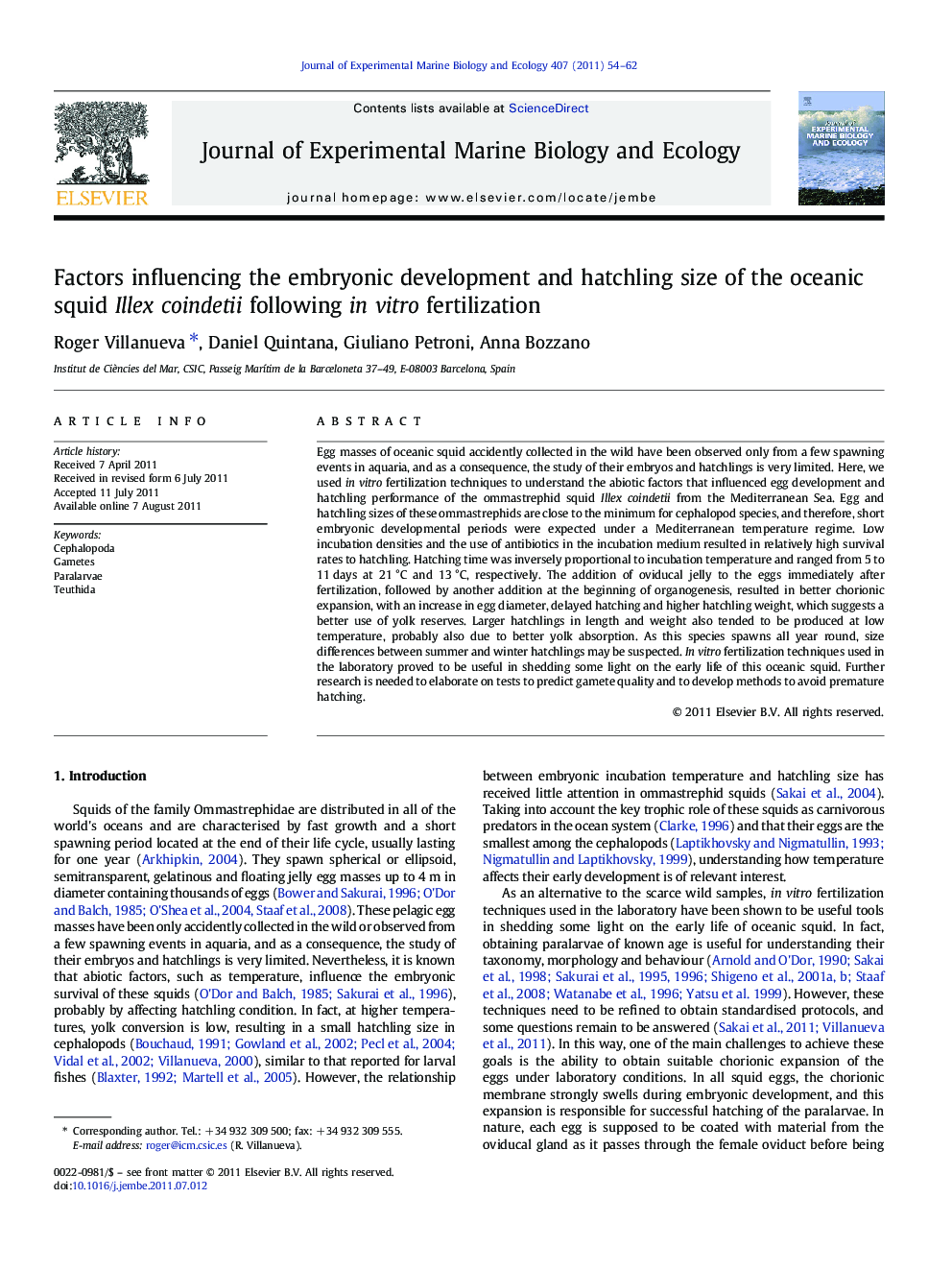| کد مقاله | کد نشریه | سال انتشار | مقاله انگلیسی | نسخه تمام متن |
|---|---|---|---|---|
| 6304530 | 1305811 | 2011 | 9 صفحه PDF | دانلود رایگان |

Egg masses of oceanic squid accidently collected in the wild have been observed only from a few spawning events in aquaria, and as a consequence, the study of their embryos and hatchlings is very limited. Here, we used in vitro fertilization techniques to understand the abiotic factors that influenced egg development and hatchling performance of the ommastrephid squid Illex coindetii from the Mediterranean Sea. Egg and hatchling sizes of these ommastrephids are close to the minimum for cephalopod species, and therefore, short embryonic developmental periods were expected under a Mediterranean temperature regime. Low incubation densities and the use of antibiotics in the incubation medium resulted in relatively high survival rates to hatchling. Hatching time was inversely proportional to incubation temperature and ranged from 5 to 11 days at 21 °C and 13 °C, respectively. The addition of oviducal jelly to the eggs immediately after fertilization, followed by another addition at the beginning of organogenesis, resulted in better chorionic expansion, with an increase in egg diameter, delayed hatching and higher hatchling weight, which suggests a better use of yolk reserves. Larger hatchlings in length and weight also tended to be produced at low temperature, probably also due to better yolk absorption. As this species spawns all year round, size differences between summer and winter hatchlings may be suspected. In vitro fertilization techniques used in the laboratory proved to be useful in shedding some light on the early life of this oceanic squid. Further research is needed to elaborate on tests to predict gamete quality and to develop methods to avoid premature hatching.
⺠Low incubation densities resulted in high survival rates to hatchling. ⺠Hatching time ranged from 5 to 11 days at 21 °C and 13 °C, respectively. ⺠Larger hatchlings tended to be produced at low temperature. ⺠Additions of oviducal jelly to eggs increase egg diameter and delayed hatching.
Journal: Journal of Experimental Marine Biology and Ecology - Volume 407, Issue 1, 15 October 2011, Pages 54-62